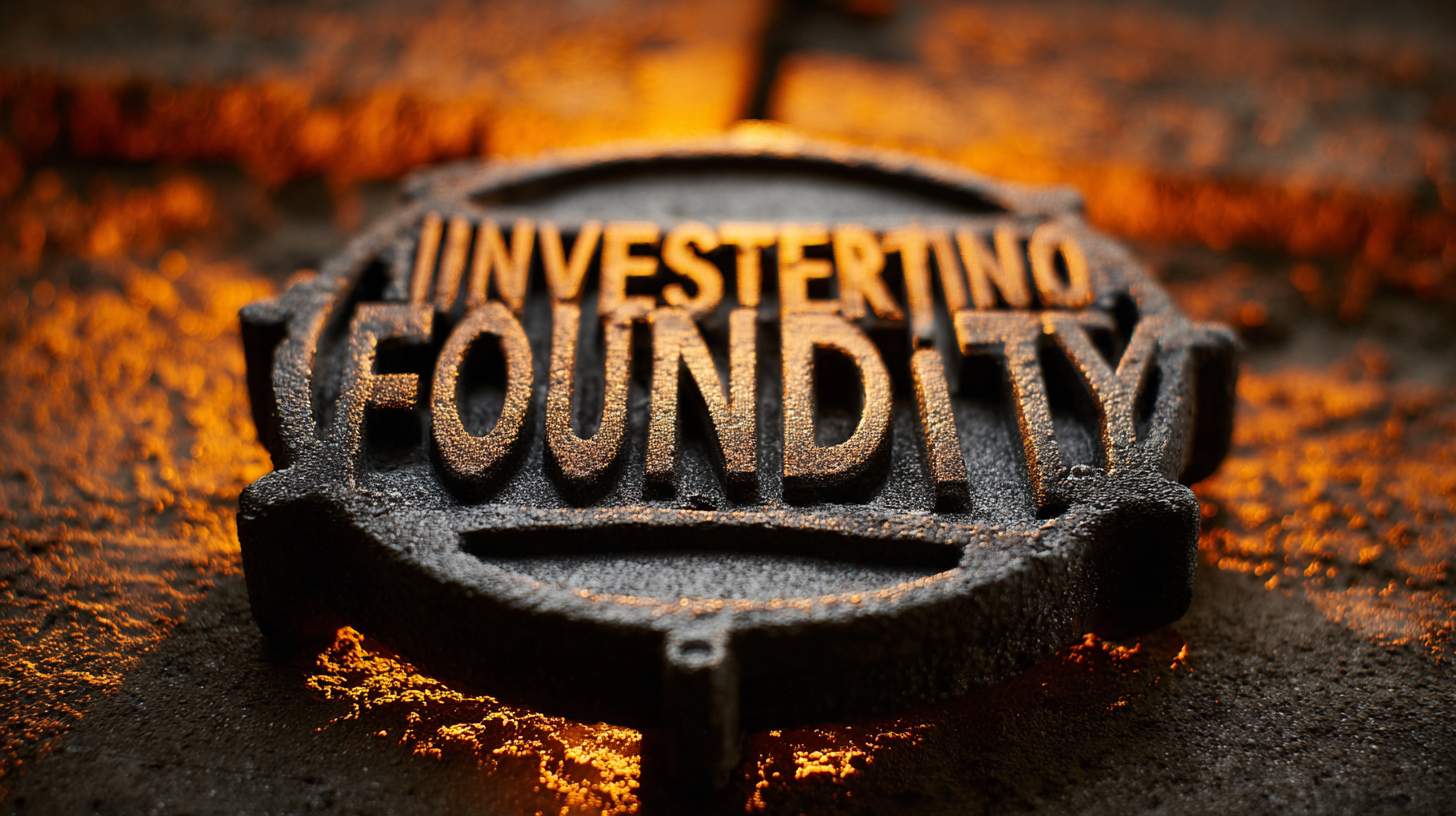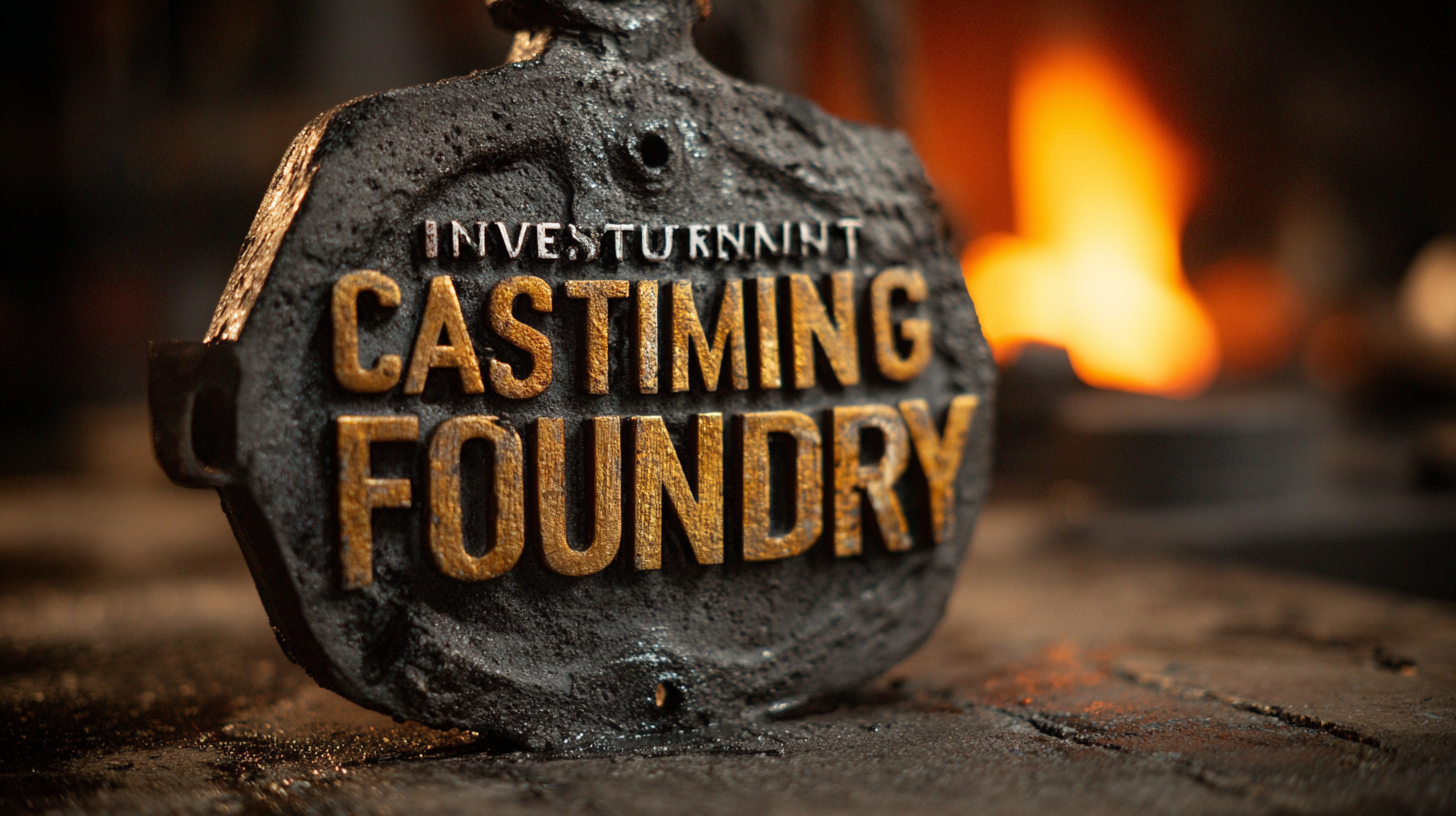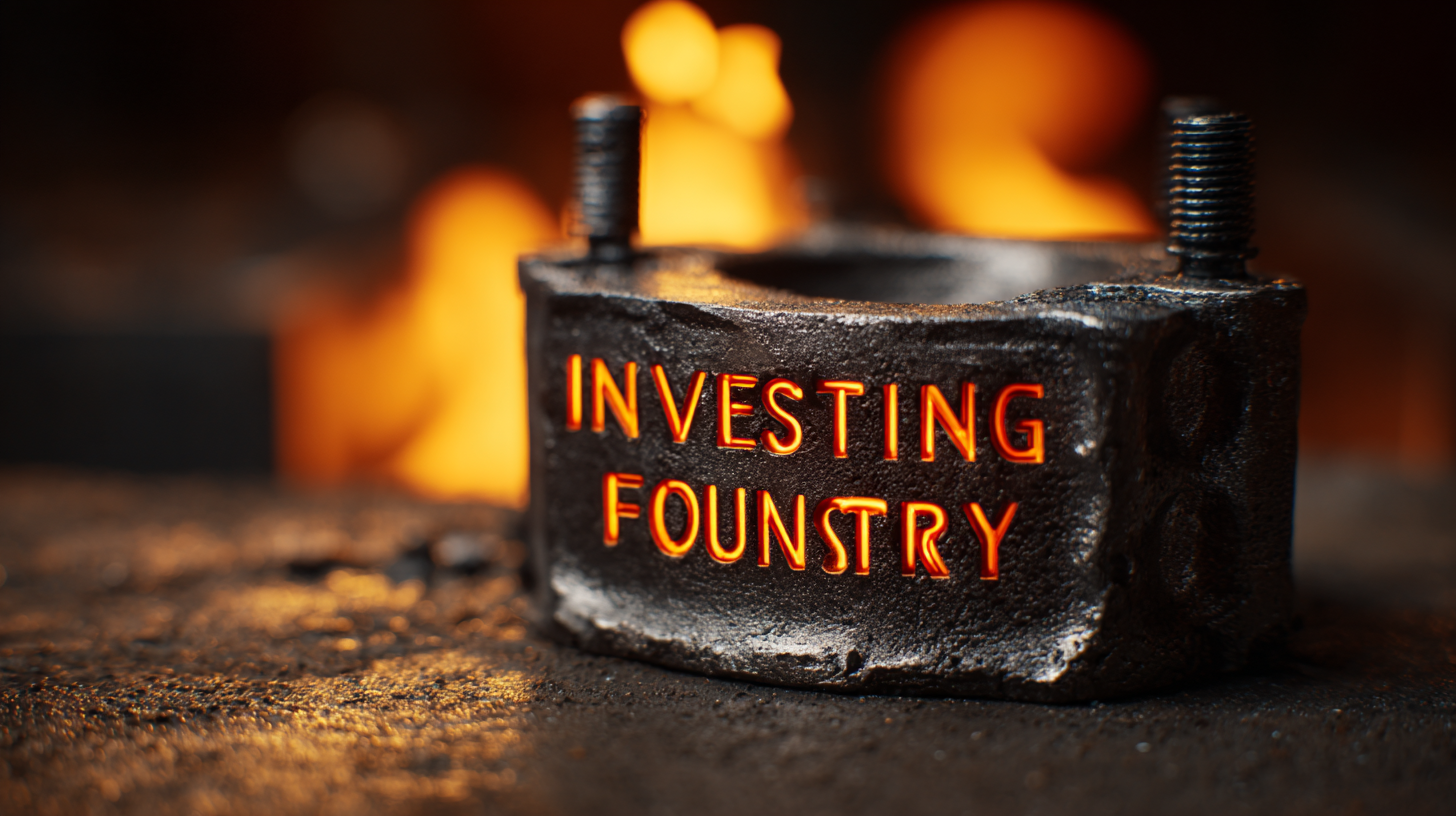In today’s manufacturing landscape, the demand for precision components continues to rise, particularly in sectors such as aerospace, automotive, and medical devices. The investment casting process, known for its ability to produce complex shapes with tight tolerances, is a preferred method for quality-conscious companies.

According to a recent report by Allied Market Research, the investment casting market is projected to reach $23 billion by 2027, growing at a CAGR of 5.4%. This growth underscores the importance of choosing the right Investment Casting Foundry, as it directly impacts the quality, cost, and turnaround time of production. Partnering with a reliable and experienced foundry not only ensures adherence to industry standards but also fosters long-term business success.
Therefore, understanding how to identify and select quality suppliers is crucial for any business aiming to leverage the advantages of investment casting.
Investment casting is a time-honored manufacturing process that provides numerous benefits for businesses aiming to enhance their production capabilities. One of the primary advantages is its ability to produce complex shapes with high precision. This method allows for intricate designs that traditional machining might struggle to achieve, saving time and reducing material waste. By incorporating investment casting into your production line, you can focus on innovation and creativity without compromising on quality.
When selecting a foundry, consider evaluating their technology and expertise to ensure they can meet your specific needs. Look for suppliers who've invested in advanced equipment, as this can significantly impact the quality of the final product. Moreover, assess their experience in your industry sector; a foundry familiar with your requirements is more likely to provide tailored solutions.
Tip: Always request samples and prototypes before making large orders. This allows you to gauge the foundry's capabilities and make informed decisions. Additionally, don’t overlook the importance of communication—choose a supplier that values transparency and responsiveness to minimize potential issues during the production process.

When evaluating a trusted investment casting foundry, quality standards should be at the forefront of your decision-making process. A reliable foundry will adhere to internationally recognized standards, such as ISO 9001, ensuring that their processes are consistent and their output meets stringent quality requirements. This certification not only reflects their commitment to quality management but also signifies that they invest in continuous improvement practices to enhance their production processes and product reliability.
Additionally, transparent communication is vital when assessing potential suppliers. A reputable foundry will provide detailed documentation of their quality assurance protocols, including material certifications and inspection reports. Engaging with their technical team can offer insights into their manufacturing methods, quality control measures, and capability to meet customized specifications. Visiting the foundry in person, if possible, can further reinforce your evaluation, allowing you to witness their operations firsthand and assess their equipment and workforce expertise. Prioritizing these quality standards will help ensure you partner with a foundry that can consistently deliver top-tier products.
| Criteria | Description | Rating (out of 5) |
|---|---|---|
| Material Quality | For durable and reliable products, check the foundry's sourcing of raw materials. | 4.5 |
| Technology Used | Evaluate the level of technology and equipment used in the casting process. | 4.8 |
| Certifications | Check for industry certifications and quality management systems in place. | 4.7 |
| Customer Service | Assess responsiveness and support provided to clients during the process. | 4.6 |
| Lead Time | Understand the average turnaround time for projects and its reliability. | 4.4 |
When delving into investment casting, material selection is paramount to achieving optimal performance and quality in your finished products. The choice of material not only affects the mechanical properties and corrosion resistance of the cast components but also plays a crucial role in the overall manufacturability and cost-effectiveness of the project. Common materials used in investment casting include stainless steel, aluminum, and titanium, each offering unique advantages tailored to specific applications.
To ensure you select the right material, consider the operational environment of your components. For high-temperature applications, materials with excellent thermal stability such as nickel-based alloys are preferable. Additionally, the design complexity and required tolerances of the castings will guide your material choices.
**Tips:** Always consult with your foundry regarding the suitability of materials for your specific project requirements, as they can provide valuable insights based on their expertise. Another useful tip is to perform thorough material testing early in the design phase to avoid costly reworks later on. Finally, collaborating with suppliers who offer a range of materials can provide you with flexibility and options that align with your business needs.
The investment casting industry has seen significant dynamics, particularly influenced by the global impact of Chinese manufacturing. As companies seek quality suppliers, understanding market trends becomes essential. The automotive camshaft market, for instance, continues to evolve as manufacturers evaluate various casting technologies. From cast camshafts to forged and assembled alternatives, each method offers different advantages depending on the application—whether it’s for passenger cars, light commercial vehicles, or heavy-duty trucks.

Tip: When searching for the right investment casting foundry, consider their specialization in specific technologies. Evaluate their production capabilities and past performance in manufacturing complex components to ensure you are partnering with a provider that meets your business needs.
Moreover, the semiconductor equipment market is projected to grow considerably, reflecting trends in investment casting as it relates to high-tech applications. The demand for precision components in sectors like aerospace and automotive will bolster the investment casting market further.
Tip: Conduct thorough research on potential suppliers, looking for certifications and quality assurance practices. Establish communication early to foster a collaborative relationship, which can lead to more tailored solutions that align with industry advancements.
When selecting a foundry for investment casting, conducting a thorough cost analysis is essential to ensure that you balance quality and price effectively. Numerous studies indicate that while cheaper options may seem appealing, they often lead to higher long-term costs due to defects and rework. According to industry reports, the average cost of defects in manufacturing can account for up to 6% of total sales, underscoring the importance of choosing a supplier that prioritizes quality.
Additionally, the recent advancements in technology, such as sophisticated testing processes seen in the gaming industry, highlight the critical nature of balancing performance and quality. Just as video game developers refine their products through rigorous quality control, foundries must adopt similar strategies to produce superior castings. Reports from leading market analysts suggest that investment in quality assurance can improve a foundry’s output efficiency by 20-30% while reducing overall scrap rates, thus enhancing a company's bottom line. This data-driven approach not only minimizes costs but also ensures that businesses receive components that meet their exact specifications.




